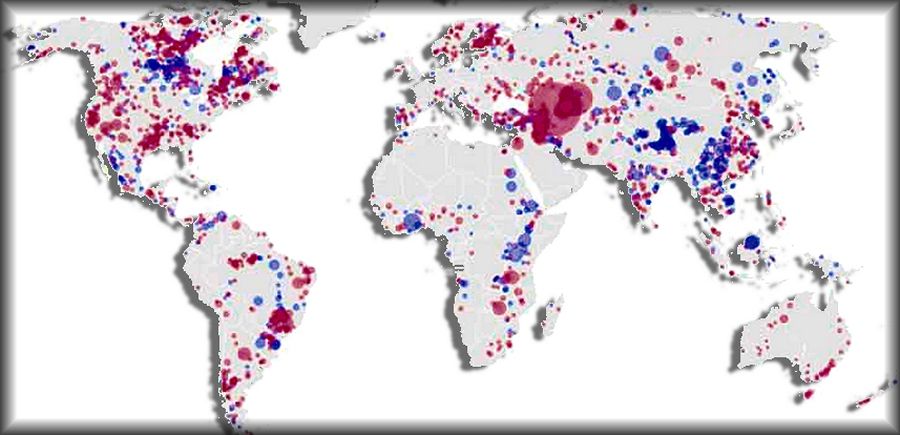ALERT ON LOW WATER IN THE LAKES
AND TANKS OF THE WORLD |
|
The bottom of Lake Titicaca, in Bolivia, has completely dried up, transformed into a desert. The lake of Serre-Ponçon, in the Alps, reveals new banks, it is the same in Spain or in Voglans, in the Jura. "Lakes are in danger globally, and this has broad implications," Balaji Rajagopalan, a professor at the University of Colorado Boulder and co-author of the study, told AFP. “They allow societies and humanity to live, and yet they don't get the respect they deserve. » Lakes cover about 3% of the earth's surface, but account for 87% of liquid fresh water on Earth. They are used for human consumption, agriculture, or even the production of electricity. About a quarter of the world's population lives in an area with a lake or reservoir (a body of water regulated by a dam) that is drying up. Nearly 2,000 bodies of water studied Previous work has already looked at the decline of larger lakes individually. But this study is the first to offer a detailed view of global trends, and the causes of change, through satellite observations. In total, the researchers studied 1,972 bodies of water, representing the vast majority of natural lakes (focusing on those larger than 100 km2) and reservoirs. Over the nearly 30-year period studied (from 1992 to 2020), the study concludes that they drained the equivalent of all the water consumed by the United States in 2015. The study has an unexpected result: lakes lose water not only in arid areas, but also in humid regions. "It is generally considered that when the climate warms up, the arid regions dry out even more, and the humid regions become wetter", explains Balaji Rajagopalan. But even in the latter, “the lakes are in decline”, which is “surprising”, he underlined, giving the example of India. To determine the causes of the observed trends, the scientists segmented their analysis according to the type of body of water. For natural lakes, they attribute about half of water loss to human activities and rising temperatures, which cause increased evaporation – the latter factor being linked to climate change. In addition, humans or herds may need to consume more water due to higher temperatures. With regard to reservoirs, the construction of new dams has made it possible to increase their overall volume of water, but nearly two thirds of the large reservoirs are in decline. Sediment accumulation was the main factor reducing their storage capacity, although droughts also affect some, such as in the southwestern United States. Many consequences The consequences of this decline are numerous. Lack of water can cause population displacements. Water quality can also be affected if a lake's level is low. Like the oceans, the lakes also store carbon, and no longer play this role when they disappear, in turn aggravating global warming. But the researchers' message is not fatalistic: on the contrary, they seek to raise awareness. Decision makers are now “armed with information”. | |
| Abby Shelcore for DayNewsWorld | |
 |
|




